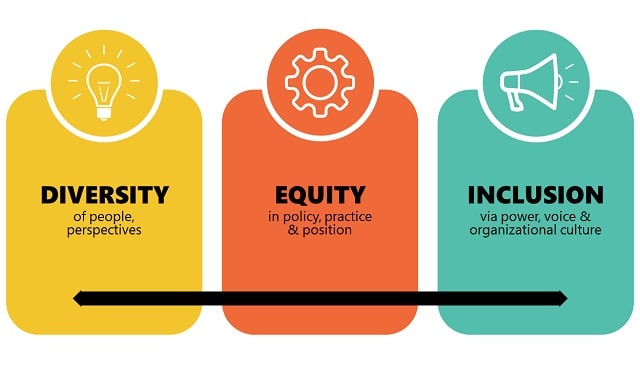
Do you know what the "E" in DEI stands for? It's equity! And workplace equity is essential for so many reasons. According to Gallup, only 28% of employees feel that their organization is fair to everyone. This is worrisome, as it is tough to conceive of a team being productive or productive when there is rampant bias.
Most companies still have a long way to go before they become fair and equitable for everyone, where everyone feels respected. A lot of organizations are still failing miserably in this area. But there is hope! By becoming more aware of the issue and taking steps to improve, you can move closer to achieving equity in the workplace. We will get to more on that essential work issue below!
What Is Equity?
The letter "E" in DEI stands for equity, often defined as fairness or justice. In the context of workplace equity, it refers to the idea that everyone should have equal access to opportunities and resources. This includes job openings, promotions, training opportunities, and compensation.
Equity is different from equality, which means everyone is treated the same. For example, if two employees are equally qualified for a promotion, the promotion should go to the most suitable person, regardless of race, gender, or other factors.
Workplace equity is significant because it creates a level playing field where everyone has the same chance to succeed. This can lead to better morale, increased productivity, and a more positive work environment for employees.
There are a few ways to create equity in the workplace, such as:
- Reviewing job descriptions to make sure they are free of bias
- Implementing blind resume screening during the hiring process
- Creating mentorship and sponsorship programs
- Offering training and development opportunities to all employees
- Conducting regular pay equity audits
How To Demonstrate Equity In The Workplace?
Companies dedicated to equity take an active role in deciding how best to end workplace unfairness. They recognize significant historical and continuing disparities and seek to reduce them with their actions. They also understand that one size does not fit all when it comes to equity in the workplace.
Diversity and Inclusion (D & I) are essential – but equity is the "E" in DEI, and it is what companies must focus on to create lasting change. It is not a quick-fix solution; it is a long-term, sustainable commitment that requires an organization to examine its policies, practices, and procedures deeply.
Because diversity and inclusion are complex topics that often change, it can be challenging to measure progress. When your company's leaders lack the time or knowledge to do so, it is helpful to bring in outside help. Multiple tools that use data analytics and artificial intelligence have been created to help workplaces improve diversity and inclusion.
By tracking D&I metrics, you can show progress over time and ensure that your workplace is moving in the right direction. You can also use these tools to identify areas with room for improvement. Some of the most common D&I metrics include:
- Number of diverse employees at each level of the organization
- Diversity of new hires
- Turnover rates for diverse employees
- Number of employees who have participated in D&I training
- Number of D&I initiatives launched in the past year
Conclusion
Workplace equity is essential to diversity, equity, and inclusion initiatives. By creating equitable practices in the workplace, you can make the same level for all employees, leading to increased productivity and morale.
If you prioritize diversity and inclusion, your workplace will become one where everyone feels respected and valued. And by investing in it, you can create a more just and equitable workplace for all.
